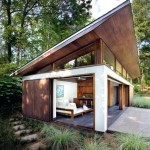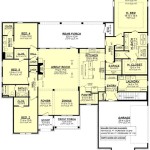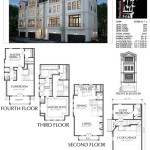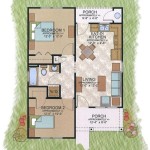House floor plans are detailed drawings that illustrate the layout of a house. They show the dimensions of each room, their relative placement to each other, and the location of doors, windows, and other features. Floor plans are essential for planning the construction of a new house or renovating an existing one, as they provide a visual representation of how the space will be used.
Floor plans can be used for a variety of purposes. Architects and builders use them to design and construct houses. Real estate agents use them to market properties to potential buyers. Homeowners use them to plan renovations or additions. Floor plans can also be used to assess the accessibility of a home for people with disabilities and to develop evacuation plans in case of an emergency.
When designing a house, it is important to consider the floor plan carefully. The floor plan will determine the layout of the house, the flow of traffic, and the overall functionality of the space. Here are 9 important points to keep in mind when creating a house floor plan:
- Functionality: The floor plan should be designed to meet the needs of the people who will be living in the house.
- Flow: The floor plan should allow for a smooth flow of traffic between rooms.
- Space planning: The floor plan should make efficient use of space.
- Privacy: The floor plan should provide privacy for the occupants of the house.
- Natural light: The floor plan should maximize the use of natural light.
- Views: The floor plan should take advantage of any views from the property.
- Outdoor space: The floor plan should include outdoor space, such as a patio or deck.
- Storage: The floor plan should include adequate storage space.
- Accessibility: The floor plan should be accessible to people with disabilities.
By considering these factors, you can create a house floor plan that meets your needs and creates a comfortable and functional living space.
Functionality: The floor plan should be designed to meet the needs of the people who will be living in the house.
The floor plan should be designed to meet the specific needs of the people who will be living in the house. This includes considering the number of people in the household, their ages, and their lifestyles. For example, a family with young children will need a floor plan that includes a playroom or family room, while a couple of retirees may prefer a floor plan with a home office or library.
The floor plan should also consider the activities that will take place in the house. For example, if the family enjoys cooking and entertaining, the floor plan should include a large kitchen and dining room. If the family enjoys spending time outdoors, the floor plan should include a patio or deck. It is also important to consider the flow of traffic between rooms. The floor plan should allow for easy movement between the different areas of the house, without creating any bottlenecks or congestion.
Finally, the floor plan should be designed to be flexible and adaptable. As the needs of the household change over time, the floor plan should be able to accommodate those changes. For example, a family with young children may eventually need to convert a playroom into a bedroom as the children get older. The floor plan should be designed to make this type of change as easy as possible.
By considering the specific needs of the people who will be living in the house, the floor plan can be designed to create a comfortable and functional living space that meets their needs now and in the future.
Flow: The floor plan should allow for a smooth flow of traffic between rooms.
The flow of traffic in a house is important for both comfort and safety. A well-designed floor plan will allow people to move easily between rooms without creating bottlenecks or congestion.
- Clear pathways: The floor plan should include clear pathways between rooms. This means avoiding narrow hallways or doorways that could create congestion.
- Central gathering spaces: The floor plan should include central gathering spaces, such as a living room or family room. This will give people a place to congregate and socialize without feeling cramped.
- Separate public and private spaces: The floor plan should separate public and private spaces. This means placing bedrooms and bathrooms away from the main living areas of the house. This will help to create a more private and peaceful environment for the occupants of the house.
- Consider future needs: The floor plan should consider future needs. For example, if the family is planning to have children, the floor plan should include a playroom or family room. If the family is planning to age in place, the floor plan should include features such as wider doorways and accessible bathrooms.
By considering the flow of traffic, you can create a floor plan that is both comfortable and functional.
Space planning: The floor plan should make efficient use of space.
Space planning is the process of arranging the elements of a floor plan to create a functional and efficient space. This involves considering the size and shape of the space, the number of people who will be using it, and the activities that will take place in it.
There are a number of factors to consider when space planning. One important factor is the flow of traffic. The floor plan should allow for easy movement between rooms without creating any bottlenecks or congestion. Another important factor is the use of space. The floor plan should make efficient use of space, avoiding any wasted or unused areas.
There are a number of techniques that can be used to space plan effectively. One technique is to use a bubble diagram. A bubble diagram is a sketch that shows the different spaces in a floor plan and their relative sizes. This can help to identify any areas that are too large or too small, and to make adjustments accordingly.
Another technique is to use furniture templates. Furniture templates are cut-outs that represent the size and shape of different pieces of furniture. These can be placed on the floor plan to help visualize how the space will be used and to identify any potential problems.
By carefully considering space planning, you can create a floor plan that makes efficient use of space and creates a comfortable and functional living environment.
Privacy: The floor plan should provide privacy for the occupants of the house.
Privacy is an important consideration when designing a house floor plan. The floor plan should be designed to provide privacy for all of the occupants of the house, regardless of their age or gender. This means creating a floor plan that separates public and private spaces, and that minimizes noise and visual distractions.
One way to create privacy in a house is to separate public and private spaces. Public spaces, such as the living room, dining room, and kitchen, are typically located at the front of the house. Private spaces, such as bedrooms and bathrooms, are typically located at the back of the house. This separation helps to create a sense of privacy for the occupants of the house, as they can retreat to their private spaces when they need some peace and quiet.
Another way to create privacy in a house is to minimize noise and visual distractions. This can be done by using soundproofing materials in walls and ceilings, and by placing furniture and other objects in a way that blocks noise and visual distractions. For example, a bookcase can be placed in front of a window to block out noise from the street, or a couch can be placed in front of a doorway to block out visual distractions from the hallway.
By carefully considering privacy when designing a house floor plan, you can create a home that is both comfortable and private.
Natural light: The floor plan should maximize the use of natural light.
Natural light is essential for both our physical and mental well-being. It helps to regulate our circadian rhythms, improve our mood, and boost our productivity. When designing a house floor plan, it is important to consider how to maximize the use of natural light.
There are a number of ways to maximize the use of natural light in a house. One way is to use large windows and doors. Windows and doors allow natural light to enter the house, and they can also be used to frame views of the outdoors. Another way to maximize the use of natural light is to use skylights. Skylights are windows that are installed in the roof of a house. They allow natural light to enter the house from above, and they can be used to brighten up even the darkest corners of a room.
In addition to using windows, doors, and skylights, there are a number of other ways to maximize the use of natural light in a house. One way is to use light-colored paint and finishes. Light-colored paint and finishes reflect light, making a room feel brighter and more spacious. Another way to maximize the use of natural light is to use mirrors. Mirrors reflect light, and they can be used to bounce light around a room and make it feel brighter.
By carefully considering the use of natural light when designing a house floor plan, you can create a home that is both bright and inviting.
Views: The floor plan should take advantage of any views from the property.
If your property has beautiful views, you’ll want to take advantage of them when designing your house floor plan. The floor plan should be designed to maximize the views from the main living areas of the house, such as the living room, dining room, and kitchen. This can be done by using large windows and doors, and by placing these rooms on the side of the house that has the best views.
In addition to the main living areas, you may also want to consider designing other rooms in the house to take advantage of the views. For example, you could design a master bedroom with a balcony or patio that overlooks the backyard. Or, you could design a home office with a large window that frames a view of the mountains.
- Capture the best views: The floor plan should be designed to capture the best views from the property. This means placing the main living areas, such as the living room, dining room, and kitchen, on the side of the house that has the best views.
- Maximize natural light: Large windows and doors can be used to maximize natural light and frame views of the outdoors. Skylights can also be used to bring natural light into the house from above.
- Create outdoor living spaces: A deck, patio, or balcony can be used to create an outdoor living space that takes advantage of the views. This can be a great place to relax and enjoy the outdoors.
- Consider the orientation of the house: The orientation of the house can also affect the views from the property. For example, a house that is oriented to the south will have more sunlight and better views of the backyard.
By carefully considering the views when designing your house floor plan, you can create a home that takes full advantage of the beauty of your property.
Outdoor space: The floor plan should include outdoor space, such as a patio or deck.
Outdoor space is an important part of any home. It provides a place to relax and enjoy the outdoors, and it can also be used for entertaining guests. When designing a house floor plan, it is important to consider how you will use your outdoor space and to design a floor plan that includes the type of outdoor space that you want.
- Patio: A patio is a paved area that is typically located outside of the house. Patios can be used for a variety of purposes, such as dining, entertaining, or simply relaxing. Patios are a good option for people who want a low-maintenance outdoor space.
- Deck: A deck is a raised platform that is typically made of wood. Decks can be used for a variety of purposes, such as dining, entertaining, or sunbathing. Decks are a good option for people who want an outdoor space that is elevated and provides views of the surrounding area.
- Balcony: A balcony is a platform that is attached to the side of a house. Balconies can be used for a variety of purposes, such as relaxing, enjoying the views, or growing plants. Balconies are a good option for people who live in urban areas and have limited outdoor space.
- Porch: A porch is a covered area that is attached to the front or back of a house. Porches can be used for a variety of purposes, such as relaxing, entertaining, or enjoying the outdoors. Porches are a good option for people who want an outdoor space that is protected from the elements.
When choosing the type of outdoor space that you want, it is important to consider your needs and lifestyle. If you enjoy entertaining guests, you may want to choose a patio or deck that is large enough to accommodate a dining table and chairs. If you enjoy relaxing and enjoying the views, you may want to choose a balcony or porch that provides views of the surrounding area. No matter what type of outdoor space you choose, it is important to make sure that it is included in your house floor plan.
Storage: The floor plan should include adequate storage space.
Adequate storage space is essential for any home. It helps to keep your belongings organized and out of sight, and it can also help to make your home feel more spacious and less cluttered. When designing a house floor plan, it is important to consider how much storage space you will need and to design a floor plan that includes adequate storage space.
There are a number of different types of storage space that you may want to consider including in your house floor plan. These include:
- Closets: Closets are a great way to store clothes, shoes, and other belongings. They can be located in bedrooms, hallways, and other areas of the house.
- Cabinets: Cabinets are another great way to store belongings. They can be used in the kitchen, bathroom, laundry room, and other areas of the house.
- Shelves: Shelves can be used to store books, DVDs, and other items. They can be located in the living room, family room, and other areas of the house.
- Drawers: Drawers are a great way to store small items, such as jewelry, office supplies, and tools. They can be located in dressers, desks, and other pieces of furniture.
When determining how much storage space you need, it is important to consider your lifestyle and needs. If you have a lot of belongings, you will need more storage space. If you have children, you will need storage space for their toys, games, and other belongings. If you work from home, you will need storage space for your office supplies and equipment.
Once you have determined how much storage space you need, you can start to design a floor plan that includes adequate storage space. Here are a few tips:
- Use vertical space: Vertical space is often overlooked when it comes to storage. However, it can be a great way to maximize storage space. Consider using shelves, cabinets, and other vertical storage solutions to store your belongings.
- Think outside the box: Don’t be afraid to think outside the box when it comes to storage. There are many creative ways to store your belongings, such as using under-bed storage containers, over-the-door organizers, and wall-mounted shelves.
- Declutter regularly: One of the best ways to ensure that you have adequate storage space is to declutter regularly. Get rid of anything you don’t use or need. This will help to free up storage space and make your home feel more spacious.
By following these tips, you can design a house floor plan that includes adequate storage space. This will help to keep your belongings organized and out of sight, and it can also help to make your home feel more spacious and less cluttered.
Accessibility: The floor plan should be accessible to people with disabilities.
The floor plan should be designed to be accessible to people with disabilities. This means creating a floor plan that is easy to navigate for people with mobility impairments, visual impairments, or hearing impairments. It also means providing features that make it easier for people with disabilities to use the home, such as wider doorways, accessible bathrooms, and ramps.
- Wider doorways: Wider doorways make it easier for people with mobility impairments to move around the house. A standard doorway is 32 inches wide, but a doorway that is 36 inches wide is considered to be accessible.
- Accessible bathrooms: Accessible bathrooms include features such as grab bars, roll-in showers, and raised toilets. These features make it easier for people with mobility impairments to use the bathroom safely and independently.
- Ramps: Ramps provide a way for people with mobility impairments to access different levels of the house. Ramps should be designed with a gentle slope and should have handrails on both sides.
- Other features: Other features that can make a house more accessible for people with disabilities include lever door handles, accessible kitchen appliances, and closed captioning on TVs.
By considering accessibility when designing a house floor plan, you can create a home that is welcoming and inclusive for everyone.










Related Posts








